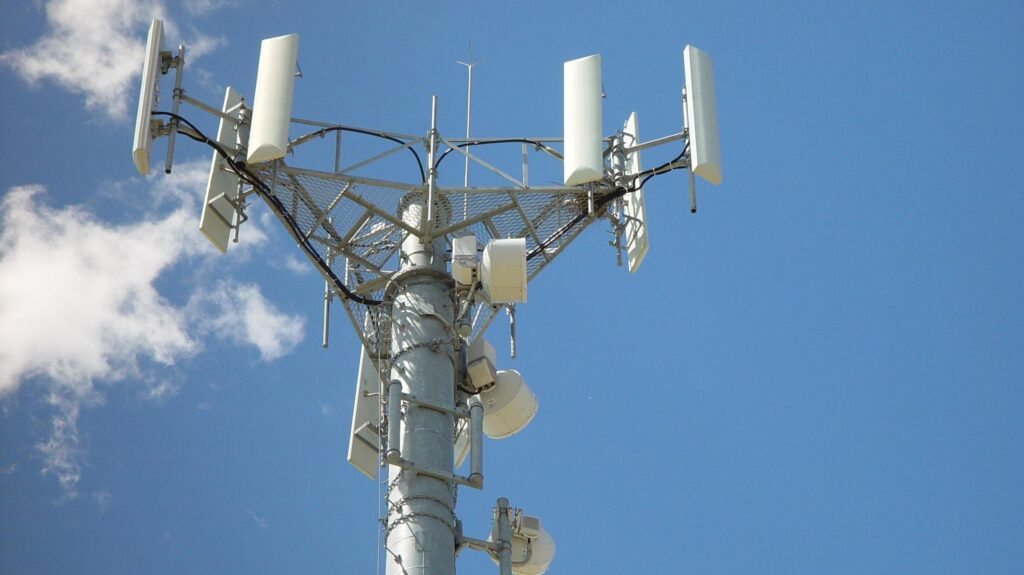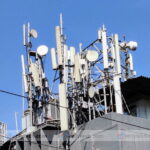With the Spectrum auction slated for 1st of March 2021, we need to have a basic understanding of Telecom Airwaves and how much or how little of it an operator can hold in a particular circle. For the sake of the auction an operator is considered an ‘Existing operator’ for a particular band if it currently holds some spectrum in that band in that circle. If an operator does not currently hold spectrum in that band then it is considered a ‘New entrant’ for that band in that circle. eg. If Jio were to bid for 2100 MHz spectrum in any circle it would be considered a new entrant but if Airtel were to bid for the same it would be considered an existing operator.
Spectrum bands on sale in Auction 2021:
700 MHz:
A total of 30 MHz paired spectrum in this band is available with the Department of Telecom in all circles (remaining 5 MHz is reserved for Indian Railways and 10 MHz is with the Ministry of Defence). Spectrum in this band will be auctioned in a block size of 5 MHz and the minimum quantity that an existing operator or new entrant needs to bid for is 1 block and in increments of 1 block thereof.
850 MHz:
A total of 17.5 MHz paired spectrum in this band is available with DoT in most circles (remaining 2.5 MHz is reserved for MoD). Spectrum in this band will be auctioned in a block size of 1.25 MHz and the minimum quantity that an existing operator needs to bid for is 1 block whereas a new entrant would need to bid for a minimum of 4 blocks where available (3 in circles where only 3 are available, 2 in circles where only 2 are available or 1 in circles where only 1 is available). Incremental spectrum in multiples of 1 block.
900 MHz:
A total of 23.2 MHz paired spectrum in this band is available with DoT in most circles. Spectrum in this band will be auctioned in a block size of 0.2 MHz. For the sake of bidding this band and the 1800 MHz band will be considered as 1 and if an operator holds spectrum in either of the two bands in a circle, it will be considered as an existing operator for the other band and not a new entrant. The minimum quantity that an existing operator needs to bid for is 1 block whereas a new entrant would need to bid for a minimum of 25 blocks where available (1 block if available spectrum in the circle is less than 25 blocks). Incremental spectrum in multiples of 1 block.
1800 MHz:
A total of 54.8 MHz paired spectrum in this band is available with DoT in all circles (remaining 20 MHz is reserved for MoD). Spectrum in this band will be auctioned in a block size of 0.2 MHz. For the sake of bidding this band and the 900 MHz band will be considered as 1 and if an operator holds spectrum in either of the two bands in a circle, it will be considered as an existing operator for the other band and not a new entrant. The minimum quantity that an existing operator needs to bid for is 1 block whereas a new entrant would need to bid for a minimum of 25 blocks where available (1 block if available spectrum in the circle is less than 25 blocks). Incremental spectrum in multiples of 1 block.
2100 MHz:
A total of 40 MHz paired spectrum in this band is available with DoT in all circles (remaining 20 MHz is reserved for MoD). Spectrum in this band will be auctioned in a block size of 5 MHz and the minimum quantity that an existing operator or new entrant needs to bid for is 1 block and in increments of 1 block thereof.
2300 MHz:
A total of 80 MHz unpaired spectrum in this band is available with DoT in all circles (remaining 20 MHz is reserved for MoD). Spectrum in this band will be auctioned in a block size of 10 MHz and the minimum quantity that an existing operator or new entrant needs to bid for is 1 block and in increments of 1 block thereof.
2500 MHz:
A total of 40 MHz unpaired spectrum in this band is available with DoT in all circles (remaining 154 MHz is reserved for Department of space). Spectrum in this band will be auctioned in a block size of 10 MHz and the minimum quantity that an existing operator or new entrant needs to bid for is 1 block and in increments of 1 block thereof.
Spectrum caps for Auction 2021:
Now that we have discussed the minimum amount of spectrum an operator needs to bid for in the auction, let us shift our focus on the maximum permissible amount of spectrum per circle that an operator can bid for. The DoT for the sake of maintaining healthy competition and for discouraging market monopoly by any operator has set a cap on the maximum quantity of spectrum any operator can hold in a circle.
Sub 1 GHz Cap:
There is a Sub 1 GHz cap which limits the holding of any operator to 50% of the total available spectrum in 700 MHz + 850 MHz + 900 MHz bands. Given in the table below are the current total sub GHz holdings of the 3 existing operators along with the circle wise spectrum caps for reference to calculate the maximum quantity of fresh spectrum it can purchase. Keep in mind that the value of paired spectrum needs to be doubled (Uplink + downlink) for the sake of calculating.
| Circle | Vi | Airtel | Jio | Cap |
|---|---|---|---|---|
| AP | 10 | 25.5 | 0 | 70.7 |
| Assam | 0 | 16 | 10 | 65.7 |
| Bihar | 0 | 15.6 | 10 | 70.7 |
| Delhi | 20 | 14.5 | 7.5 | 70.7 |
| Gujarat | 22 | 0 | 17.5 | 67.7 |
| Haryana | 24.4 | 2.5 | 10 | 66.1 |
| HP | 0 | 14.8 | 10 | 70.7 |
| J&K | 0 | 12.4 | 10 | 61.1 |
| Karnataka | 10 | 17.6 | 7.5 | 70.7 |
| Kerala | 24.8 | 0 | 7.5 | 70.7 |
| Kolkata | 14 | 14 | 7.5 | 70.7 |
| MP | 14.8 | 0 | 10 | 70.7 |
| Maharashtra | 28 | 5 | 0 | 70.7 |
| Mumbai | 22 | 15 | 10 | 70.7 |
| North East | 0 | 17.6 | 10 | 65.7 |
| Odisha | 10 | 14.8 | 10 | 70.7 |
| Punjab | 11.2 | 20 | 7.5 | 69.3 |
| Rajasthan | 12.8 | 12 | 10 | 66.1 |
| Tamil Nadu | 0 | 0 | 7.5 | 70.7 |
| UP East | 11.2 | 12.4 | 10 | 70.7 |
| UP West | 22.4 | 0 | 7.5 | 66.1 |
| West Bengal | 13.2 | 13.2 | 7.5 | 70.7 |
Overall Cap:
There is an ‘Overall cap’ which limits the holding of any operator to 35% of the total available spectrum across all frequency bands in any telecom circle. Given in the table below are the current ‘Overall’ holdings of the 3 existing operators along with the circle wise spectrum caps for reference to calculate the maximum quantity of fresh spectrum it can purchase. Keep in mind that the value of paired spectrum needs to be doubled (Uplink + downlink) for the sake of calculating.
| Circle | Vi | Airtel | Jio | Cap |
|---|---|---|---|---|
| AP | 43.2 | 108.3 | 41.6 | 157.85 |
| Assam | 80 | 87.2 | 50.8 | 154.35 |
| Bihar | 55.6 | 96 | 50 | 157.85 |
| Delhi | 71.2 | 78.5 | 48.3 | 157.85 |
| Gujarat | 113.6 | 70 | 59.5 | 155.75 |
| Haryana | 106 | 62.5 | 40 | 154.63 |
| HP | 42.4 | 75.2 | 60.8 | 157.85 |
| J&K | 54 | 62.4 | 50 | 151.13 |
| Karnataka | 42 | 85.2 | 47.5 | 157.85 |
| Kerala | 114.8 | 50 | 47.5 | 157.85 |
| Kolkata | 84 | 62 | 57.5 | 157.85 |
| MP | 92 | 61.6 | 52.8 | 157.85 |
| Maharashtra | 122.8 | 75 | 40 | 157.85 |
| Mumbai | 91.2 | 77 | 53.2 | 157.85 |
| North East | 81.6 | 77.6 | 52.8 | 154.35 |
| Odisha | 74 | 78.4 | 50 | 157.85 |
| Punjab | 71.2 | 70 | 37.9 | 156.87 |
| Rajasthan | 82.8 | 82 | 50 | 154.63 |
| Tamil Nadu | 52.8 | 60 | 51.1 | 157.85 |
| UP East | 88.4 | 68 | 42.8 | 157.85 |
| UP West | 91.2 | 64 | 37.5 | 154.63 |
| West Bengal | 90 | 65.6 | 58.7 | 157.85 |
For a more detailed understanding of the spectrum held by all 4 operators (3 pvt + 1 PSU) in all of India’s 22 telecom circles along with details of the liberalization status and expiry dates, you can refer to our Pan India Spectrum Holding Chart 2021.
Note: For the sake of calculation of total spectrum holding of operators for the upcoming auction, we have excluded the spectrum expiring in 2021 as this spectrum has been put up for sale in this auction.









Excellent Information and good work. We have got some knowledge about Telecom and spectrum after your articles and reviews only. Loves u @Esmail bro.
Always first one to report and very accurate.
Thanks bro, spectrum auction holds a special importance for me over the years 🙂